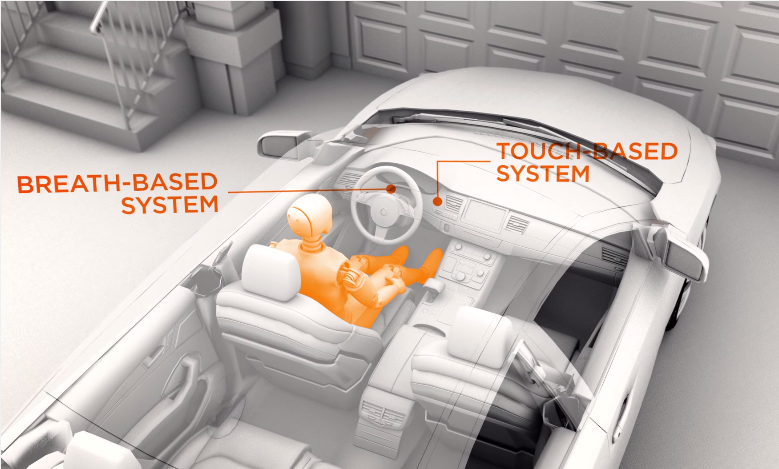
According to the Center for Disease Control and Prevention, 30 people in the United States perish on a daily basis on account of an alcohol-related driving accident . This grizzly statistic, which, oddly enough is tallied by the CDC, can amount to one death every 51 minutes. But if the US National Highway Traffic Safety Administration (NHTSA) has anything to do with it, drunks “ain’t goin nowhere.” The NHTSA is funding the development of a collection of technologies which work together to prevent drunks from taking off if their biometrics indicate inebriation.
At a recent expo in Washington DC, the NHTSA unveiled a test vehicle equipped with two prototype solutions making up its Driver Alcohol Detection System for Safety (DADSS) program. The first is a breathalyzer sensor located in the steering wheel or driver-side door that detects the alcohol vapors in a driver’s voice.
The other solution is a touch sensor placed on either the ignition button or gear shift that scans one’s blood-alcohol content (BAC) and compares it to nation’s legal limit (0.08% in the United States, 0.05% in most of the EU); if the sensor determines the driver’s BAC is too high, the vehicle simply won’t start.
While the plan is ambitious in its scope, the NHTSA is not seeking to legally mandate the inclusion of the DADSS in future US vehicles; instead, it aims to encourage auto-makers to offer the tech as an additional featured marketed toward “specific populations groups,” — presumably, teenagers, commercial fleet drivers, and other high-risk groups.
The NHTSA hopes the tech will be commercially available in the next five years. It’s unclear whether mouthwash, or the stinky breath of the car full of drunks that the designated driver is ferrying, will affect the driver’s ability to start the vehicle.
Source: Ars Technica
Advertisement
Learn more about Electronic Products Magazine





